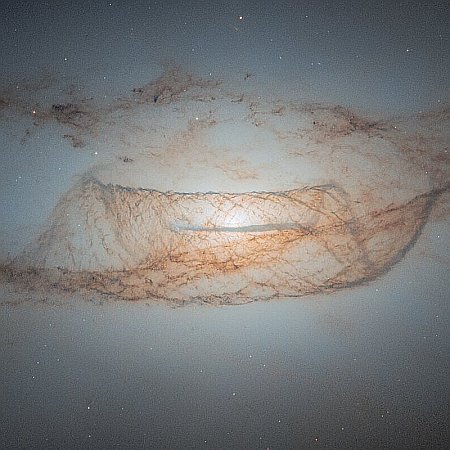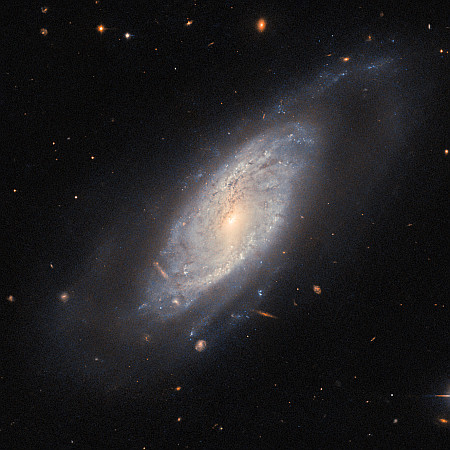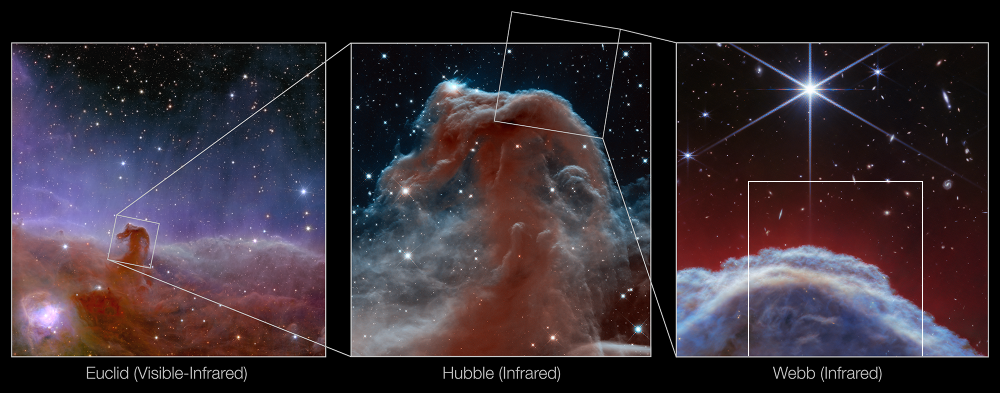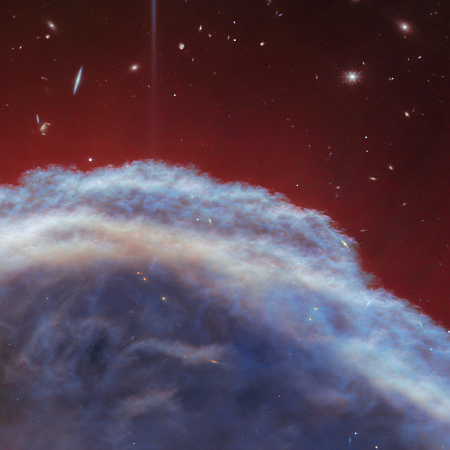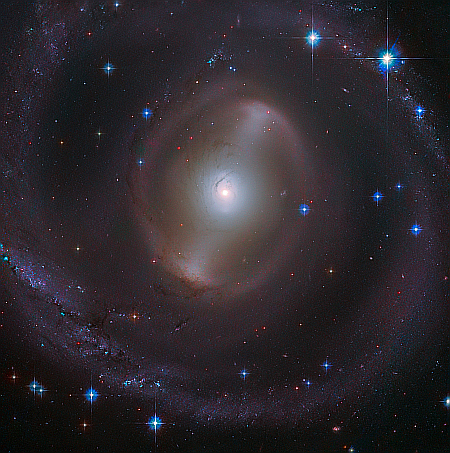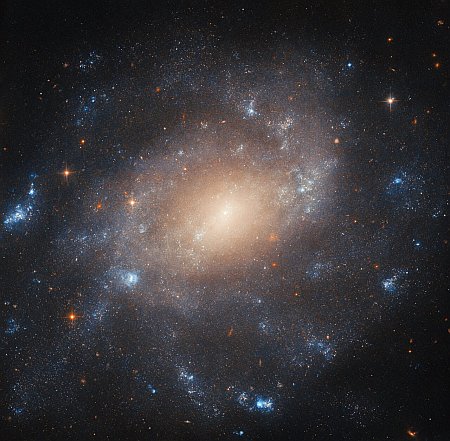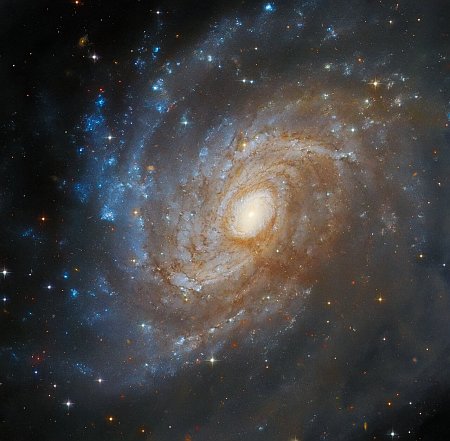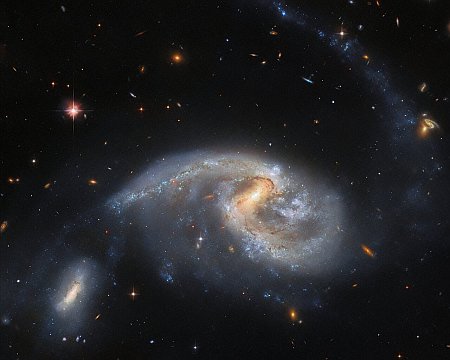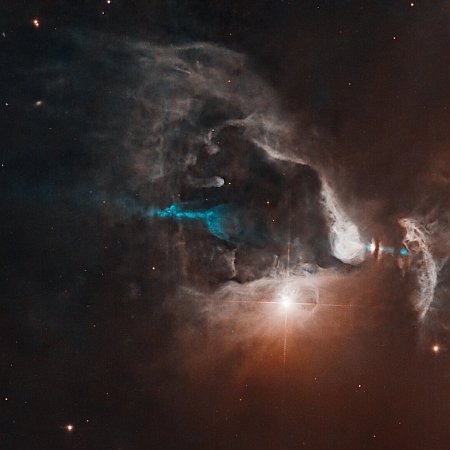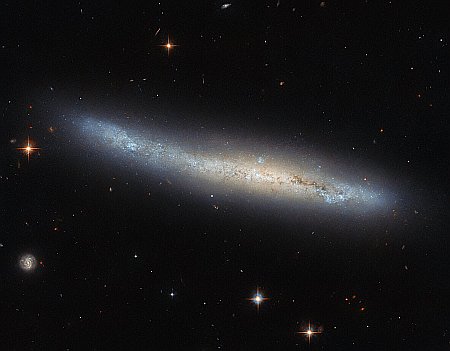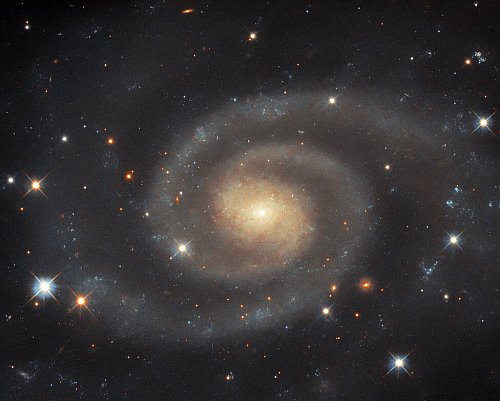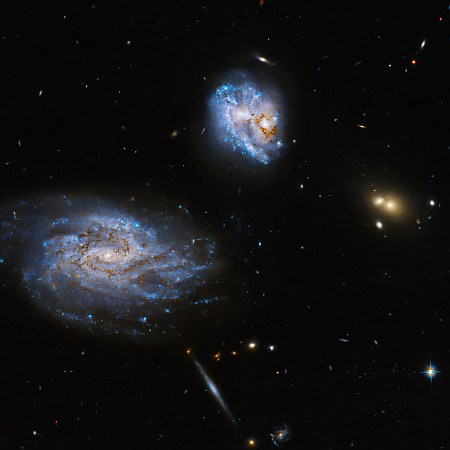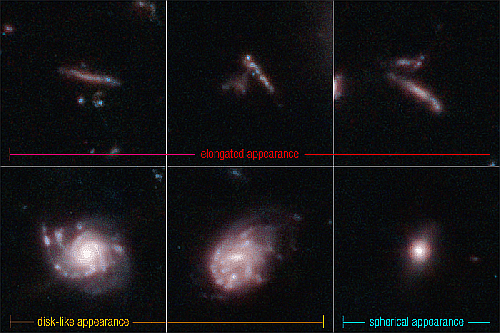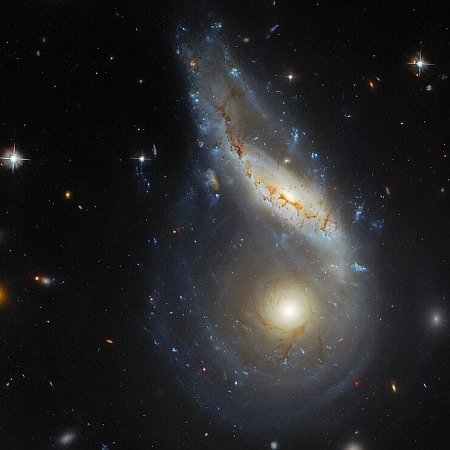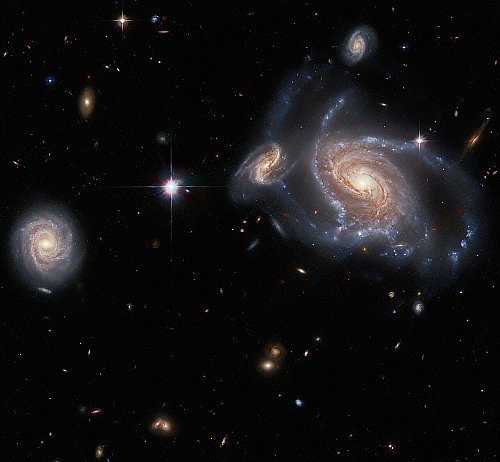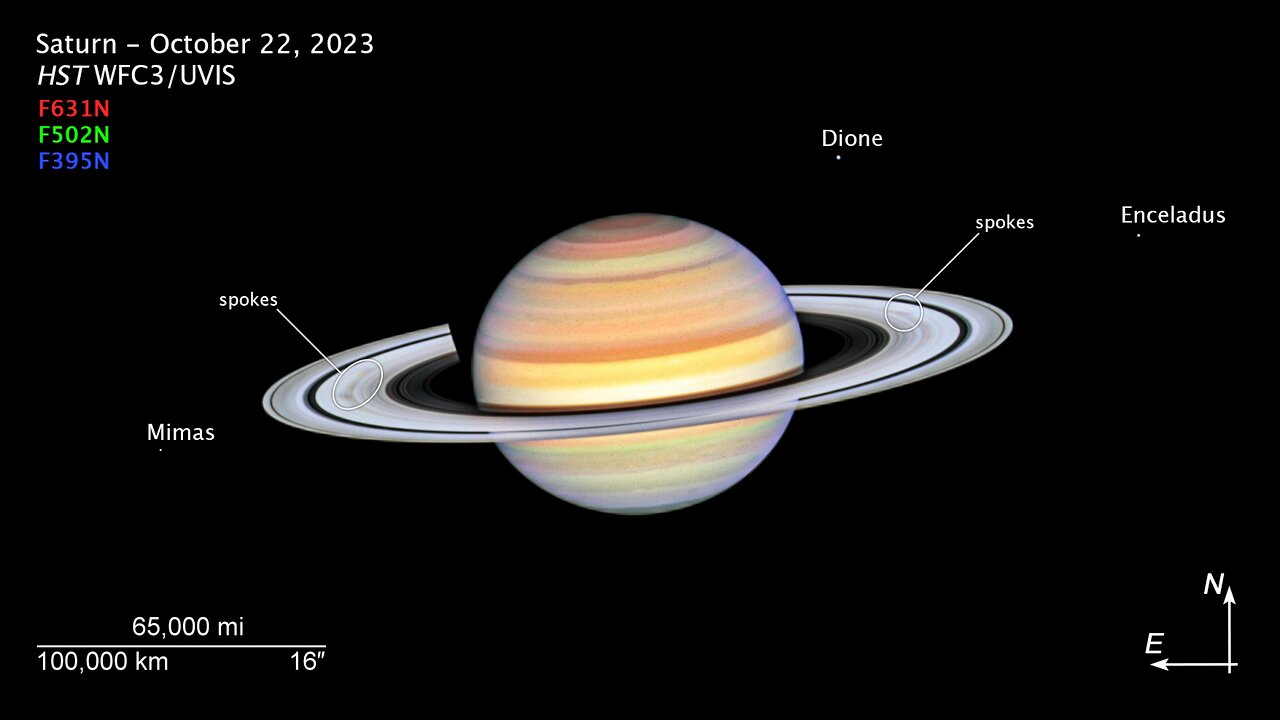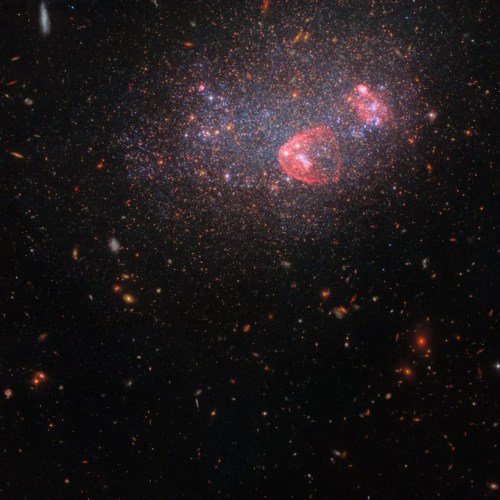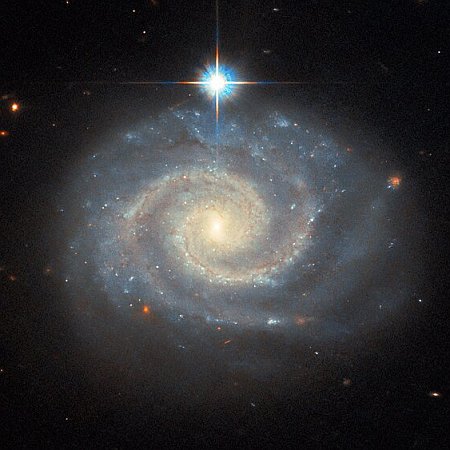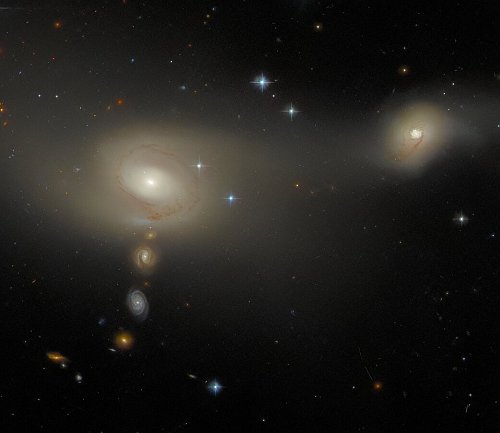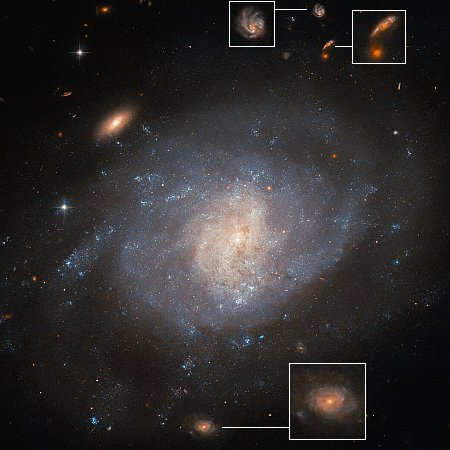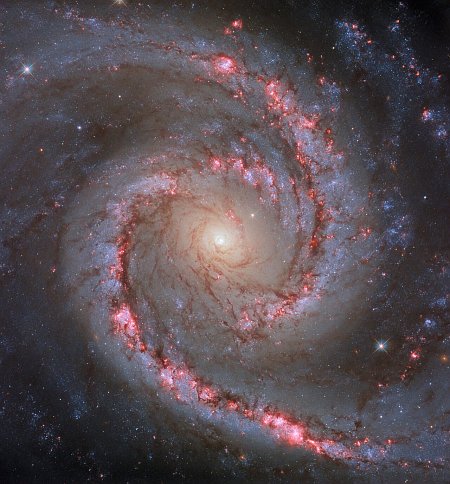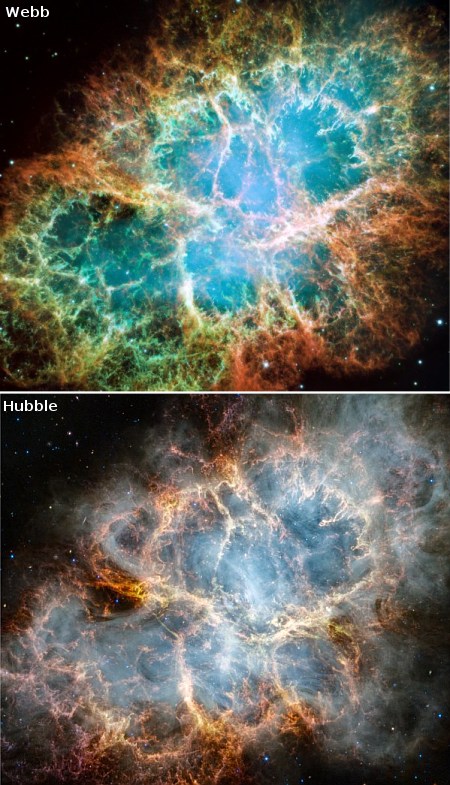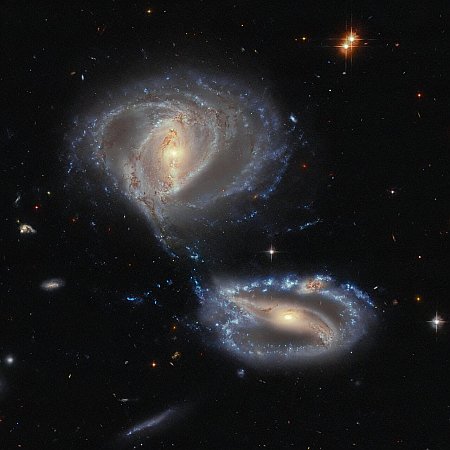A galaxy’s net of dust
Cool image time! The picture to the right, cropped, reduced, and sharpened to post here, was taken by the Hubble Space Telescope of the central part of galaxy NGC 4753, 60 million light years away and known as a lenticular galaxy because of its elongated elliptical shape and ill-defined spiral arms. It is believed we looking at this galaxy edge-on.
You can see a wider image of NGC 4753 here, released in January and taken by the Gemini South telescope in Chile. According to that press release, the brown dust lanes that seem to form a wavy net in the foreground are created by a process called differential precession:
Precession occurs when a rotating object’s axis of rotation changes orientation, like a spinning top that wobbles as it loses momentum. And differential means that the rate of precession varies depending on the radius. In the case of a dusty accretion disk orbiting a galactic nucleus, the rate of precession is faster toward the center and slower near the edges. This varying, wobble-like motion results from the angle at which NGC 4753 and its former dwarf companion collided and is the cause of the strongly twisted dust lanes we see wrapped around the galaxy’s luminous nucleus today.
Once again, the limitation of only observing this object from one angle makes it very difficult to untangle what it really looks like. Therefore, these conclusions carry a great deal of uncertainty.
Cool image time! The picture to the right, cropped, reduced, and sharpened to post here, was taken by the Hubble Space Telescope of the central part of galaxy NGC 4753, 60 million light years away and known as a lenticular galaxy because of its elongated elliptical shape and ill-defined spiral arms. It is believed we looking at this galaxy edge-on.
You can see a wider image of NGC 4753 here, released in January and taken by the Gemini South telescope in Chile. According to that press release, the brown dust lanes that seem to form a wavy net in the foreground are created by a process called differential precession:
Precession occurs when a rotating object’s axis of rotation changes orientation, like a spinning top that wobbles as it loses momentum. And differential means that the rate of precession varies depending on the radius. In the case of a dusty accretion disk orbiting a galactic nucleus, the rate of precession is faster toward the center and slower near the edges. This varying, wobble-like motion results from the angle at which NGC 4753 and its former dwarf companion collided and is the cause of the strongly twisted dust lanes we see wrapped around the galaxy’s luminous nucleus today.
Once again, the limitation of only observing this object from one angle makes it very difficult to untangle what it really looks like. Therefore, these conclusions carry a great deal of uncertainty.

